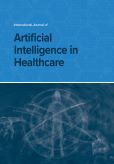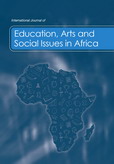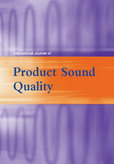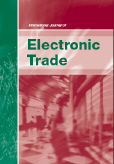Explore our journals
Browse journals by subject
Research picks
- Securing systems against the subtle but sinister
The modern network is a place where danger whispers rather than shouts. Corporate systems, public services, and critical infrastructure are increasingly complex and increasingly vulnerable to more subtle cyberattack. Where an old-school hacker might try brute-force techniques or an army of bots that pound the system until it breaks, modern threats can work more insidiously. They might masquerade as ordinary server traffic, draining resources or slowly siphoning off data, while the anti-malware systems and firewalls are focused on the brutes.
New intrusion-detection models are needed, according to the author of work published in the International Journal of Reasoning-based Intelligent Systems. While it is generally easy to hear the alarm bells ringing when the brutes are pounding the servers, the sinister-but-subtle attackers need a different approach, one that listens out for the whispers.
In the work, a new model, called ST-CCNet, promises this kind of protection. In tests against standard benchmarks, it accurately – 98.2 percent – identified covert attacks better than existing approaches. More specifically, it was able to spot low-rate distributed denial-of-service (dDOS) attacks, botnet activity, and subtle web intrusions that had been designed to look like legitimate behaviour. The model can now detect slow-burn attacks that exhaust server capacity over long periods, or threats that unfold over weeks or months. Such attacks have long been the nemesis of network security systems.
One part of the ST-CCNet system uses causal convolution to analyse traffic in temporal order, capturing tiny, momentary deviations that may appear only for microseconds but can mark the opening move of an attack. In parallel with this, a spatio-temporal transformer scans across much longer timescales, identifying patterns that only become meaningful when viewed in context, such as the rhythmic exchanges between compromised machines and their controllers.
This balanced approach addresses the shortcomings of conventional security. By combining short-term acuity with long-term memory, ST-CCNet aligns with the way real sinister-but-subtle attacks operate.
Chi, W. (2025) 'Multidimensional covert traffic attack detection via coupled spatio-temporal transformer and causal convolutional networks', Int. J. Reasoning-based Intelligent Systems, Vol. 17, No. 12, pp.35–44.
DOI: 10.1504/IJRIS.2025.150501 - Bless the MSMEs down in Africa
Sustainable entrepreneurship in Nigeria is being stymied by a lack of engagement among business owners because of structural economic and institutional barriers, according to research in the World Review of Entrepreneurship, Management and Sustainable Development that has studied one of Africa's largest entrepreneurial ecosystems.
The research used quantitative data from 310 entrepreneurs across manufacturing, sales, and food services. An analysis of this data showed that unstable macroeconomic conditions, limited access to finance, weak technological infrastructure, and inconsistent government support are the main barriers faced by entrepreneurs hoping to adopt environmentally responsible business practices. Moreover, they found that many entrepreneurs operate under conditions in which immediate cash-flow pressures outweigh long-term environmental considerations. The result is that sustainability initiatives are difficult to get underway and even harder to maintain.
Entrepreneurs in Nigeria, the study found, are somewhat aware of sustainability principles, but currency volatility, high inflation, and unreliable public services restrain action. The researchers add that access to affordable credit remains limited, particularly for micro, small and medium-sized enterprises (MSMEs). Such companies with fewer than 250 employees form the backbone of the Nigerian economy. Without financial buffers or capital, investments in cleaner technologies or resource-efficient processes are often postponed indefinitely. There is thus an urgent need to improve conditions for entrepreneurs to encourage those that are less than willing to engage that there are long-term benefits, and to nudge the more engaged further towards sustainability. Regulatory incentives and green technologies that have remained largely inaccessible to smaller companies need to be opened up to Nigeria's MSMEs.
There are obvious implications for other emerging economies facing similar constraints, which also risk missing out on the economic, environmental, and social benefits associated with sustainable enterprise. There is a need to align financial systems, policy instruments, and educational initiatives with sustainability objectives across the whole of the developing world, the research would suggest.
Ogbolu, G., Adelaja, A.A. Ohanagorom, M.I. and Shwedeh, F. (2025) 'Examining the inhibiting factors of sustainable entrepreneurship: evidence from emerging economies', World Review of Entrepreneurship, Management and Sustainable Development, Vol. 21, No. 6, pp.1–26.
DOI: 10.1504/WREMSD.2025.150508 - How does your garden grow?
The future of urban green space might be written in code, according to research in the International Journal of Reasoning-based Intelligent Systems. The age-old image of the landscape architect, sketchbook in hand, guided by intuition and a feel for the land, is being dug over by digital disruption. The work suggests that for city and town planners facing increasingly dense populations and the problems that climate change brings, the art of urban garden design needs reseeding with modern tools to fertilise new ideas.
Urban green spaces are now recognised as increasingly important for the recreation, enjoyment, and wellbeing of city dwellers, Moreover, such as spaces and in particular the protective effects of trees during scorching summers and the atmospheric cleansing they bring are no longer an aesthetic luxury but an essential part of the modern cityscape. The concrete jungle needs to go green, and an algorithmic augmentation of human intuition can help balance the competing pressures in landscaping our urban spaces.
The researchers talk of "landscape optimization" wherein a green space or garden is not simply a canvas on which to paint trees, lawns and shrubberies, but a complex data problem that can be more effectively solved algorithmically without compromising art nor beauty. The team merging aesthetics and ecology reframe the problem into a "rationality index" which considers the terrain profile, soil health, and the local climate to provide the computer with a unified metric it can interpret and from which it can provide novel design solutions using various algorithms based on natural systems such as honeybee behaviour and ant colonies.
In preliminary tests, the team found that their hybrid algorithmic approach worked better than conventional methods used to calculate land-use efficiency. They emphasise that by treating landscape design as an optimizable process, city planners can produce evidence-based layouts that are reproducible, resilient, and reliable. While the immediate focus is on gardens, the implications for wider urban planning are significant. As public authorities face mounting pressure to meet sustainability targets, the "intuition" of the past may soon give way to the "optimization" of the future.
Cheng, Y., Guo, L., Ao, S. and Wu, W. (2025) 'Spatial layout design of garden landscapes based on a hybrid metaheuristic optimisation algorithm', Int. J. Reasoning-based Intelligent Systems, Vol. 17, No. 12, pp.13–23.
DOI: 10.1504/IJRIS.2025.150502 - Ploughing the digital furrow
In terms of sustainability and competitiveness, modern agriculture depends on information across the whole of food-production. Research in the International Journal of Agricultural Resources, Governance and Ecology has looked at how data, innovation, and collaboration shape farm performance in the facing of growing climate change issues and under diverse market pressures. The work suggests that without knowledge frameworks, policies and technologies designed to improve resilience are likely to underperform.
The researchers show that information quality is a decisive factor linking farm-level decisions to wider economic and environmental outcomes. Data on production volumes, input costs, as well as resource use can be combined with national statistics and market intelligence to help farmers and policymakers to respond to price signals, supply chain disruption, and climate stress. Unfortunately, many farms still operate without formal accounting systems or even consistent record-keeping, which means their decision-making is not clear. Moreover, a lack of detailed economic awareness might be limiting the capacity of many farms to adapt production in response to changing conditions.
The detrimental effects of this information gap are worsened by social and organisational factors within the sector. Farmers' associations, cooperatives, and informal networks can play a role in knowledge exchange, but many farmers do not make full use of such networks, with differences in uptake being linked to farm size, education level, and age. The team adds that the retention of younger people in rural areas emerges is a major concern, as demographic decline threatens the sector's capacity to absorb new skills and sustain innovation over time.
The bottom line is that digitalisation, used systematically, rather than casually, might offer a structural shift in how agriculture is managed that could help overcome some of these problems. Digital systems can reduce wasted resources and wasted effort. With improved resource efficiency and decision-making supported by data in a sector where timing is often critical, farming practices might be improved. Ultimately, there is a need to embed this digitalisation within farming networks supported by leadership, coherent policy and trained personnel.
Figurek, A., Semenova, E., Thrassou, A., Semenov, A. and Vrontis, D. (2025) 'Innovative tools for the agricultural information system: a conceptual framework', Int. J. Agricultural Resources, Governance and Ecology, Vol. 20, No. 6, pp.19–36.
DOI: 10.1504/IJARGE.2025.150483 - University boost for entrepreneurial ecosytems
Universities are increasingly involved in regional economic growth, a finding that extends their impact way beyond teaching and research. This is the conclusion from a systematic review of research spanning the decade 2015 to 2025. The research, published in the World Review of Entrepreneurship, Management and Sustainable Development, highlights the ways higher education institutions can help in the emergence and development of entrepreneurial ecosystems.
They do so, the research suggests, through a broad range of knowledge-exchange mechanisms, ranging from consultancy and collaborative research to licensing, patenting, and participation in open innovation networks. These activities, the review explains, do more than transfer technology, they stimulate the creation of spinoffs, impact-driven ventures, and knowledge-based entrepreneurship.
The study looked at how research shows that universities and other higher education institutions are managing their priorities in parallel with industry requirements and cultivating extensive networks. In so doing, those HEIs are boosting the ability of local firms and organisations to recognise, assimilate, and apply external knowledge. This then translates into practical research and applications.
The research cites the Massachusetts Institute of Technology's Industrial Liaison Program and Germany's Fraunhofer Society as examples of how sustained, trust-based partnerships between universities and industry can work to yield high-technology spinoffs, co-developed commercial products, and organisational learning for participating firms.
The work also points out how government can foster innovation and collaboration between industry and academia. The review highlights how knowledge exchange is a non-linear process, in which the more formal mechanisms such as patents and licensing work with informal channels such as consultancy and professional development. Together they reinforce the entrepreneurial ecosystem.
There are implications for university administrators, policymakers, and company executives alike. There is potential for strategically designed collaborations between academia and industry. If these can then muster adequate resources, then innovation cycles can be shortened, regional economic performance improved, and entrepreneurship will benefit overall.
Boodai, N.A. and Boodai, A.A. (2025) 'Higher education institutions-led entrepreneurial ecosystem building: a systematic review from university-industry knowledge exchange perspective', World Review of Entrepreneurship, Management and Sustainable Development, Vol. 21, No. 5, pp.72–91.
DOI: 10.1504/WREMSD.2025.150418 - Vitamin guidelines need ethnic equilibration
Vitamin D supplementation is associated with significantly lower risks of type 2 diabetes and depression in certain ethnic groups in the USA, according to an analysis in the International Journal of Artificial Intelligence in Healthcare of nationally representative health data. The findings suggest that the benefits of the widely used supplement are substantial but unevenly distributed.
The researchers used data from the National Health and Nutrition Examination Survey (NHANES) to look for links between self-reported vitamin D supplement use and type 2 diabetes and depression and to investigate ethnic differences.
The strongest associations were observed among Mexican Americans and African Americans. In Mexican American adults, vitamin D supplementation was linked to a markedly lower prevalence of type 2 diabetes. Among African Americans, supplement use was associated with a reduced risk of depression.
In contrast, non-Hispanic White participants and some Asian groups showed weaker or statistically insignificant association. This suggests that supplementation had limited benefit to those populations that had higher baseline vitamin D levels. The researchers point out that darker skin pigmentation reduces the rate of biosynthesis of vitamin D from sunlight in the skin. In addition, dietary shortfalls, higher rates of obesity, and socioeconomic and environmental barriers that reduce sun exposure further compound the effect.
The team says that supplementation may be most effective where deficiency is common, rather than as a universal intervention. This is pertinent as vitamin D supplementation is not without risk. Excessive intake, often referred to as megadosing, can lead to dangerously elevated calcium levels in the blood and kidney problems.
Moreover, the findings have implications for public health policy. They suggest that universal supplementation is unnecessary and that guidance should target people who will benefit the most. There is thus a need for screening and intervention strategies that take ethnicity, baseline vitamin D status, and underlying health risks into account.
Eboigbe, T.E. and Srinivasan, S. (2025) 'The role of vitamin D supplementation in improving health outcomes among different ethnic groups', Int. J. Artificial Intelligence in Healthcare, Vol. 1, No. 1, pp.4–16.
DOI: 10.1504/IJAIH.2025.149240 - AI getting down on the potholes
Most drivers are well aware of the growing threat to their vehicles from potholes. These invasive creatures have multiplied rapidly on our roads, wearing out tyre tread, cracking axles, and in some cases causing serious accidents. The costs are enormous, but those who manage and maintain the roads have limited resources to deal with the problem, even when the accident and damage risk is on the rise.
Research in the International Journal of Information and Decision Sciences has demonstrated a highly accurate, camera-based system for detecting and pinpointing potholes on roads. The work offers a new approach to how roads might be monitored and maintained to support critical transport infrastructure. It addresses the longstanding problem of identifying road surface damage soon enough to prevent vehicle damage and accidents.
Potholes usually form when a small area of the road is damaged in some way and water ingress weakens the layers beneath the road surface. This is exacerbated by freezing temperatures as that water expands and causes even more damage. If such a pothole is repaired well and in a timely manner, then the problems can be reduced.
Unfortunately, many potholes reach a hazardous size before they are even reported and so smaller potholes form near the primary holes as hardcore and gravel spewed from the initial spread across the road surface and are ground into the surface by vehicles. Similar problems subsequent to eventual repair also arise if the maintenance crew is limited to repairing only the main area and not any adjacent damage and if they fail to remove debris from the patched area and its surroundings before leaving.
Potholes, unfortunately, are not simply a matter of inconvenience, they can lead to significant damage to vehicles as well as risking serious accidents as drivers attempt to avoid them or else temporarily lose control of their vehicle when snarled by a deep pothole. Current inspection regimes are limited, wholly manual, and commonly rely on reports of damage, often after a driver and their vehicle have come unstuck.
The new approach uses ordinary cameras rather than specialised sensors to scan the road surface. Artificial intelligence, AI in the form of a deep learning model and a bespoke convolutional neural network, can analyse and classify the images based on visual patterns associated with the presence of potholes in the photos on which the system is trained.
Tests on real-world photos of roads under varying conditions of repair and disrepair showed classification accuracy of almost 99% with a good balance between false positives and negatives. Missed potholes leave hazards unaddressed, while false alarms waste maintenance resources. The new model could lead to a much smoother ride.
Dhiman, A., Kumar, M., Yadav, A.K. and Yadav, D. (2025) 'Pothole detection and localisation from images using deep learning', Int. J. Information and Decision Sciences, Vol. 17, No. 4, pp.357-370.
DOI: 10.1504/IJIDS.2025.150097 - Working dogs, the professionals
Research in the International Journal of Work Organisation and Emotion suggests that we should change our perspective on guide dogs. Guide dogs should be understood not simply as helpful companions, but as skilled operatives performing complex emotional labour that is communicated through touch and sound rather than sight. The work challenges longstanding assumptions about work, disability, and professionalism.
The study explains that guide dogs for people with visual impairment carry out a range of continuous emotional regulation comparable to that expected of human service workers. Emotional labour, a term used to describe the management of feelings to meet occupational expectations, has traditionally been analysed through visual cues such as facial expression or posture. This research finds that in guide dog partnerships, emotional competence is instead perceived, necessarily, through haptic (touch) and acoustic (sound) channels. The cues and connection are through the dog's harness and lead and what they hear through movement, breathing and equipment.
The team has used almost a decade's worth of qualitative information based on interviews, professional practice, and the researcher's own experience to assess what we might refer to as a dog's professionalism. Calmness, confidence, and focus are conveyed through subtle changes in rhythm, tension and sound. A steady pull, quiet breathing or the absence of vocalisation can signal assurance, while irregular movement or audible stress may indicate anxiety or fatigue.
Central to this exchange is the equipment. Harnesses and leads are shown to function not only as practical tools but as communicative interfaces. Much like a uniform, the harness marks when the dog is working, establishing social and temporal boundaries. At the same time, it enables a two-way flow of emotional information, allowing dog and handler to respond to each other in real time. The research suggests that this material dimension of work has been overlooked in conventional accounts of emotional labour. The implication is always that workers must be human and that emotional displays are seen rather than felt or heard. Such assumptions exclude both animals performing skilled roles and people who rely on senses other than sight.
Warda, T. (2025) 'Harnessing emotion: the haptic and acoustic professionalism of guide dogs', Int. J. Work Organisation and Emotion, Vol. 16, No. 4, pp.400–420.
DOI: 10.1504/IJWOE.2025.150228 - Is the rhythm gonna get you?
The way in which well-known music streaming platform Spotify can hold on to users depends less on headline-grabbing technical expansion than on how effectively its various features satisfy its listeners, according to a study in the International Journal of Electronic Customer Relationship Management. The research showed that personalised recommendations, ongoing platform innovation, and user participation are need to keep users committed in the long-term.
The research, based on a survey of active users of the platform, looked at how different forms of customer engagement would affect satisfaction with the service and, in turn, whether those users stay loyal. This timely analysis comes at a point in the evolution of the industry when competition is growing and pressures from artists and users alike are intensifying.
Four key engagement drivers were analysed. These are Spotify's recommender systems, technological innovation, user-generated content, and perceived product quality. Overall user satisfaction was seen as a mediating factor of these four factors, giving users the choice of should I stay, or should I go? The biggest effect came from the recommender systems. These are algorithms that analyse one's listening behaviour and then suggest new music, playlists, or artists based on one's activity. If users felt that those recommendations were appropriate, then they reported higher satisfaction with the service. This aspect of music streaming services thus emphasises just how important personalisation can be as the streaming libraries grow larger.
The team also found that technological innovation was a positive for many users. Features that improve usability or listening continuity, such as smoother playback across devices, were all seen as a benefit. In addition, user-generated content, such as shareable playlists, was seen as a useful benefit to staying with the platform. The study suggests that such tools foster a sense of ownership and community, and so attachment to the platform.
Santoso, A.S. and Johanes, S. (2025) 'Engagement in rhythm: decoding the drivers of customer loyalty in Spotify's music platform', Int. J. Electronic Customer Relationship Management, Vol. 15, No. 3, pp.151–173.
DOI: 10.1504/IJECRM.2025.148915 - Spud be good to me
Research in the International Journal of Mathematical Modelling and Numerical Optimisation has looked at how direct heating with infrared could be used to dry food for preservation more efficiently, more predictably, and more sustainably, than do current approaches.
The researchers have modelled the movement of heat and the loss of moisture in food dried using infrared using a potato slice as a test sample. Their findings suggest that infrared drying offers precise control and can be scaled up.
Drying is one of the oldest and most important methods of food preservation, particularly in regions where refrigeration and storage infrastructure are limited. Standard hot-air drying is energy-intensive and inefficient, and can reduce food quality. Infrared drying differs in that the energy penetrates the food and this avoids the issues associated with surface heat transfer. It thus speeds up moisture loss and makes the process more uniform.
The team's simulations of the infrared drying process were compared with previously published experimental data and found to agree closely with it. Having validated the model, the team could then test how different operating conditions might affect the drying process. The results show that moisture evaporation increases sharply at the start of the process before settling into a quasi-steady state, in which conditions change more slowly. Crucially, the evaporation rate rises in proportion to the square of the infrared temperature, underlining how sensitive drying performance is to radiation intensity.
The model might be used by food scientists and producers to investigate and control desiccation of food with the potential for reducing food waste, a growing problem around the world.
Tudu, B., Barman, N., Chattopadhyay, H., Simlandi, S. and Chatterjee, S. (2025) 'Mathematical and numerical modelling of coupled heat and moisture diffusions during infrared drying of a potato slice', Int. J. Mathematical Modelling and Numerical Optimisation, Vol. 15, No. 4, pp.400–416.
DOI: 10.1504/IJMMNO.2025.149428
News
Dr. Aditya Sundar appointed as new Editor in Chief of International Journal of Molecular Engineering
Dr. Aditya Sundar from the National Energy Technology Laboratory in the USA has been appointed to take over editorship of the International Journal of Molecular Engineering.
Inderscience journals increasing issue frequency in 2026
Inderscience is pleased to announce that the following journals are increasing their issue frequency from 2026:
International Journal of Computational Vision and Robotics
Increasing from 6 to 8 issues per year
International Journal of Electronic Business
Increasing from 4 to 8 issues per year
International Journal of Electronic Marketing and Retailing
Increasing from 6 to 8 issues per year
International Journal of Medical Engineering and Informatics
Increasing from 6 to 8 issues per year
Prof. Sangbing Tsai appointed as new Editor in Chief of International Journal of Ultra Wideband Communications and Systems
Prof. Sangbing (Jason) Tsai from the International Engineering and Technology Institute in China has been appointed to take over editorship of the International Journal of Ultra Wideband Communications and Systems.




